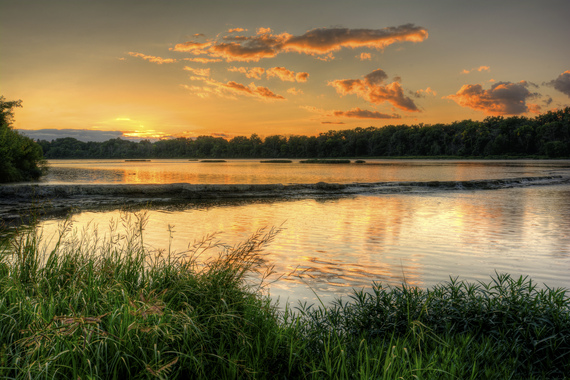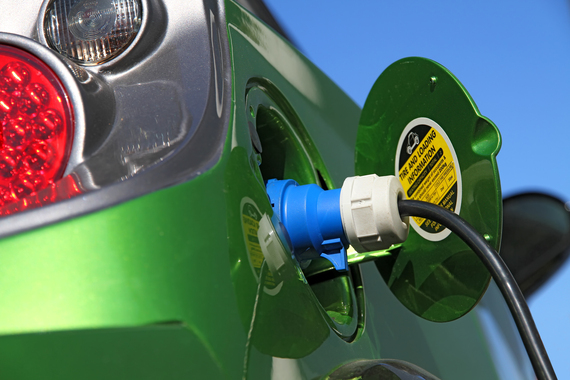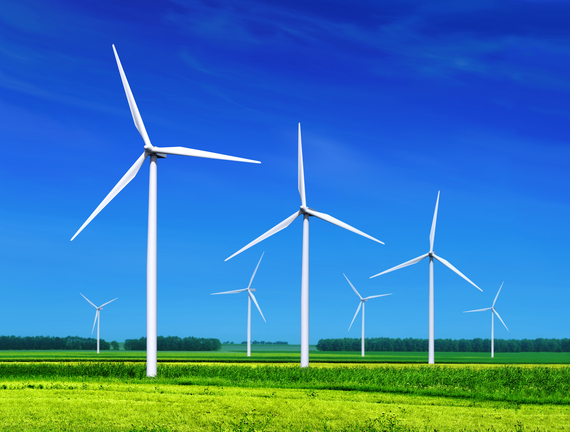
On Tuesday, February 9, the Obama administration will present its last budget to Congress. With most of his signature environmental initiatives accomplished, and Congress unlikely to adopt any pro-active environmental laws he proposes, writing the first iteration of the must-pass federal budget is one of the last opportunities President Obama has to shape policy for our air, water, our lands and our climate. Here are ten priorities for a healthier, greener future we're looking for in the president's budget.
1. The nation's most important land conservation program. The Land and Water Conservation Fund has created or expanded 40,000 parks and other projects in all 50 states for Americans to hike, fish, paddle, or just enjoy the great outdoors. Revenue from offshore drilling leases is dedicated to fund the program, but Congress has consistently raided those funds, and last year even allowed this critical conservation program to expire. A green budget should fully fund the Land & Water Conservation Fund.
2. Protecting our parks on their 100th birthday. This August marks the 100th anniversary of the National Park Service -- the agency tasked with the maintenance and protection of our nation's nearly 500 parks, trails, and recreation areas. Yet since 2005, the National Park Service's budget has been cut by half a billion dollars -- leading to long term staff losses, closed facilities, and the growth of the nearly $12 billion backlog for deferred regular maintenance. A green budget should repair dilapidated facilities and ensure enough rangers for the parks' birthday.
3. Safe drinking water. All Americans deserve safe drinking water. Yet as the unfolding crisis in Flint, MI, makes clear, we can no longer take this basic public health expectation for granted. The U.S. Environmental Protection Agency estimates that communities will need $384 billion in drinking water infrastructure between now and 2030. A green budget should substantially fund the Safe Drinking Water State Revolving Fund to ensure that all communities can provide safe, clean drinking water to their residents.
4. Sustainable, green communities. Each year, billions of gallons of sewage overflows and stormwater runoff pollute our waters, close beaches, or make people sick. Across the country, communities are eager to fix their wastewater treatment systems and prevent pollution with rain barrels, rooftop gardens, permeable pavement, open space, and other "green infrastructure" techniques that capture stormwater on-site before it causes pollution. A green budget should ramp up funding for the Clean Water State Revolving Fund, which can help states do just that.
5. Saving energy in buildings and appliances. The buildings where we live and work consume 40 percent of our energy, much of which is wasted through air leaks and outdated, unnecessarily inefficient appliances. The Department of Energy's Office of Building Technologies has played a critical role in advancing energy savings by promoting more energy efficient buildings, lighting, appliances and industrial equipment. A green budget should ensure this office continues and expands its good work.
6. Advancing solar energy. By supporting research, innovation and partnerships to promote residential and commercial photovoltaics and utility scale solar, the Solar Energy Technologies Office has helped lay the foundation for the recent rise in solar across the country. A cornerstone of the office is the SunShot Initiative, with a goal of making solar energy technologies cost competitive with conventional energy sources by 2020. By expanding resources for the Solar Energy Technologies office, a green budget will help millions more Americans go solar in the next decade.
7. The Green Climate Fund was established by the United Nations to assist developing nations reduce their carbon footprints and make the transition to clean, renewable energy. The Green Climate Fund is a critical component to the successful implementation of the Paris agreement, which sets a goal of preventing global warming above 2 degrees Celsius -- the benchmark scientists say is necessary to avoid the worst impacts of climate change. The U.S. has pledged $3 billion to the fund; a green budget should go a long way toward meeting that pledge.
8. Advancing clean electric vehicles. We can power our cars entirely with clean, renewable energy, dramatically curbing global warming pollution and ensuring cleaner air for our communities. But we need advanced technologies to deploy electric vehicles widely and affordably across the country. The U.S. Department of Energy's Office of Vehicle Technologies is meeting this challenge head-on, with a goal of making electric cars as affordable and convenient as conventional gasoline cars in the next five years. Now more than ever we need a green budget to give a big boost to advance the cause of clean electric cars.
9. Advancing wind power. By supporting research and development that reduces the financial, institutional, and technical barriers to deploying wind energy, the Wind Power Technologies Office has been able to help make turbines more efficient than ever and award funding to begin development on America's first offshore wind farm. A green budget that prioritizes research and development and invests of offshore wind technology will help grow the U.S. offshore wind industry, reduce the cost of onshore wind, and facilitate the deployment of environmentally-sited wind turbines.
10. Ending oil subsidies. With nearly limitless potential for wind, solar and other forms of renewable energy; the impending climate crisis upon us; and special places like the Arctic and the Outer Banks threatened by drilling; a green budget should move us away from fossil fuels and toward 100 percent clean energy. Yet for nearly a century, the federal government has subsidized U.S. drilling activities, polluting the environment and costing taxpayers tens of billions of dollars. A green budget should put these subsidies to rest.




